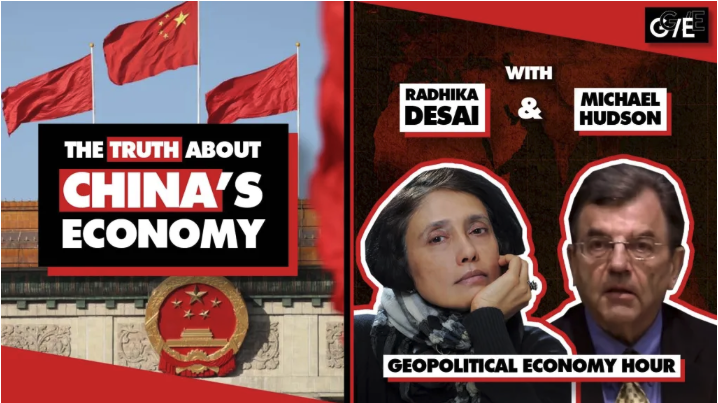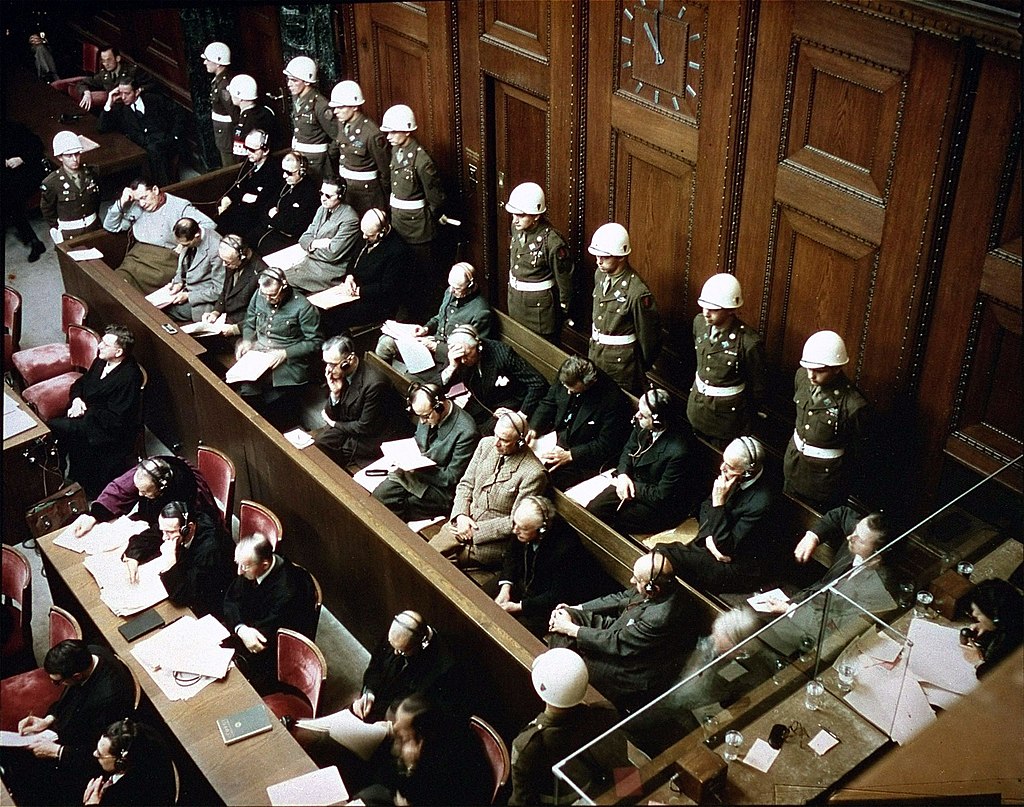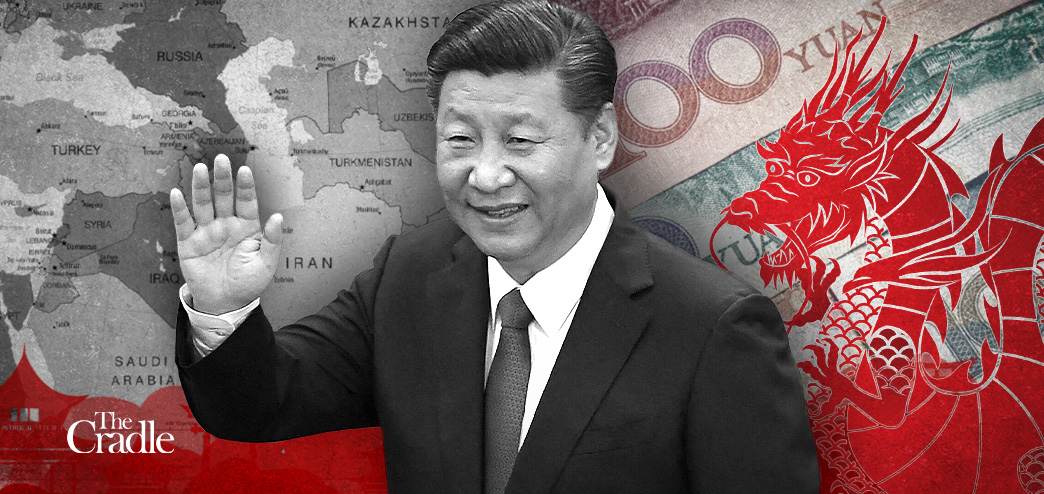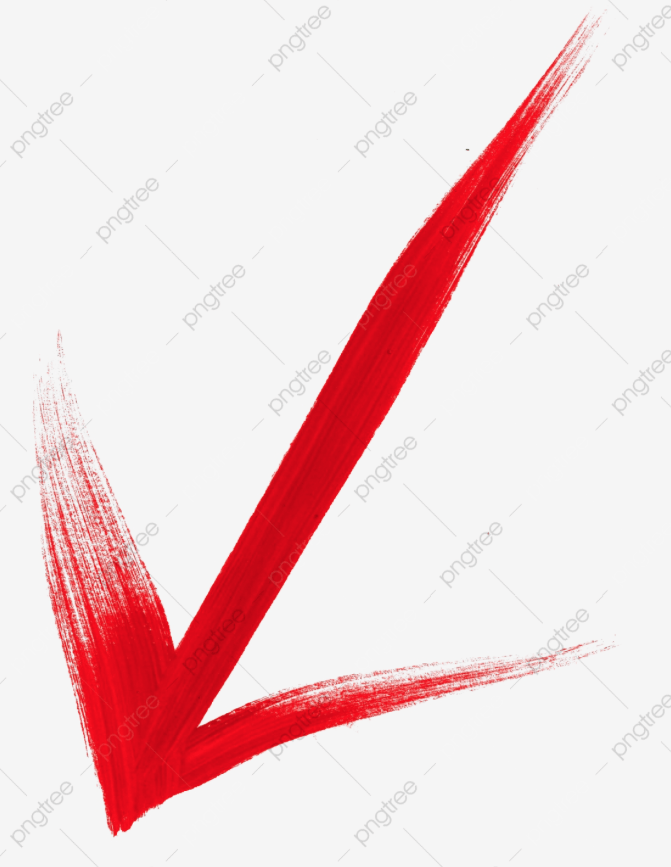China is installing the wind and solar equivalent of five large nuclear power stations per week

 By technology reporter James Purtill
By technology reporter James Purtill
| Resize text-+= |
Editor's Note: We are not too sure that renewables can safely and efficiently replace nuclear power plants. We are a bit surprised, therefore, that China is proceeding so fast and with such depth into the building of renewable energy assets. Obviously, once FUSION is available, all other methods, except perhaps for hydro, some solar, etc. may quickly become obsolete. Please read this piece by JOHN SCHOONOVER on the misconceptions people still have about nuclear energy:
The Conspiracy Against Nuclear Energy: How Big Oil Built the Ecology Movement to Demonize Nuclear Energy Competition
SCIENCE
China is installing the wind and solar equivalent of five large nuclear power stations per week
In short:
China is installing record amounts of solar and wind, while scaling back once-ambitious plans for nuclear.
While Australia is falling behind its renewables installation targets, China may meet its end-of-2030 target by the end of this month, according to a report.
What's next?
Energy experts are looking to China, the world's largest emitter and once a climate villain, for lessons on how to rapidly decarbonise.
While Australia debates the merits of going nuclear and frustration grows over the slower-than-needed rollout of solar and wind power, China is going all in on renewables.
New figures show the pace of its clean energy transition is roughly the equivalent of installing five large-scale nuclear power plants worth of renewables every week.
A report by Sydney-based think tank Climate Energy Finance (CEF) said China was installing renewables so rapidly it would meet its end-of-2030 target by the end of this month — or 6.5 years early.
It's installing at least 10 gigawatts of wind and solar generation capacity every fortnight.
By comparison, experts have said the Coalition's plan to build seven nuclear power plants would add fewer than 10GW of generation capacity to the grid sometime after 2035.
Energy experts are looking to China, the world's largest emitter, once seen as a climate villain, for lessons on how to go green, fast.
"We've seen America under President Biden throw a trillion dollars on the table [for clean energy]," CEF director Tim Buckley said.
"China's response to that has been to double down and go twice as fast."
Smart Energy Council CEO John Grimes, who recently returned from a Shanghai energy conference, said China has decarbonised its grid almost as quickly as Australia, despite having a much harder task due to the scale of its energy demand.
"They have clear targets and every part of their government is harnessed to deliver the plan," he said.
China accounts for about a third of the world's greenhouse gas emissions. A recent drop in emissions (the first since relaxing COVID-19 restrictions), combined with the decarbonisation of the power grid, may mean the country's emissions have peaked.
"With the power sector going green, emissions are set to plateau and then progressively fall towards 2030 and beyond," CEF China energy policy analyst Xuyang Dong said.
So how is China building and connecting panels so fast, and what's the role of nuclear in its transition?
Like building solar farms near Perth to power Sydney
Because its large cities of the eastern seaboard are dominated by apartment buildings, China hasn't seen an uptake of rooftop solar like in Australia.
To find space for all the solar panels and wind turbines required for the nation's energy needs, the planners of China's energy transition have looked west, to areas like the Gobi Desert.
The world's largest solar and wind farms are being built on the western edge of the country and connected to the east via the world's longest high-voltage transmission lines.

CHINA IS NOT AFRAID OF COLOSSAL UNDERTAKINGS —Workers install electric wires on the world's tallest transmission tower (385 metres) during construction of a high-voltage power line across the Yangtze.(China photographers)
These lines are so long they could span the length of our continent.
In Australian terms, it's the equivalent of using solar panels near Perth to power homes in Sydney.
Mr Buckley said China's approach was similar to the Australian one of developing regional "renewable energy zones" for large-scale electricity generation.
"They're doing what Australia is doing with renewable energy zones but they're doing it on steroids," he said.
What about 'firming' the grid?
One of the issues with switching a grid to intermittent renewables is ensuring a steady supply of power.
In technical terms, this is the difference between generation capacity (measured in gigawatts) and actual energy output (measured in gigawatt-hours, or generation over time).
Renewables have a "capacity factor" (the ratio of actual output to maximum potential generation) of about 25 per cent, whereas nuclear's is as high as 90 per cent.
So although China is installing solar and wind generation equivalent to five large nuclear power plants per week, their output is closer to one nuclear plant per week.
Renewables account for more than half of installed capacity in China, but only amount to about one-fifth of actual energy output over a year, the CEF's Tim Buckley said.
To "firm" or stabilise the supply of power from its renewable energy zones, China is using a mix of pumped hydro and battery storage, similar to Australia.
"They're installing 1GW per month of pumped hydro storage," Mr Buckley said.
"We're struggling to build the 2GW Snowy 2.0 in 10 years."

A generation unit at the new Xiangshuijian pumped storage power station in Wuhu, China. (China photographers)
There are some major differences between Australia's and China's approaches, though.
Somewhat counterintuitively, China has built dozens of coal-fired power stations alongside its renewable energy zones, to maintain the pace of its clean energy transition.
China was responsible for 95 per cent of the world's new coal power construction activity last year.
The new plants are partly needed to meet demand for electricity, which has gone up as more energy-hungry sectors of the economy, like transport, are electrified.
The coal-fired plants are also being used, like the batteries and pumped hydro, to provide a stable supply of power down the transmission lines from renewable energy zones, balancing out the intermittent solar and wind.
Despite these new coal plants, coal's share of total electricity generation in the country is falling.
The China Energy Council estimated renewables generation would overtake coal by the end of this year.
The CEF's Xuyang Dong said despite the country's reliance on coal, "having China go green at this speed and scale provides the world with a textbook to do the same".
"China is installing every week the equivalent of what we're doing every year."
Despite this speed, China wasn't installing renewables fast enough to meet its 2060 carbon neutrality target, she added.
"According to our analysis, [the current rate of installation] is not ambitious enough for China."
What about nuclear?
China is building new nuclear plants, although nowhere near as fast as it once intended.
In 2011, Chinese authorities announced fission reactors would become the foundation of the country's electricity generation system in the next "10 to 20 years".
But Japan's 2011 Fukushima disaster prompted a moratorium on inland nuclear plants, which have to use river water for cooling and are more vulnerable to frequent flooding.
Meanwhile, over the following decade, solar became the cheapest electricity in the world.
From 2010 to 2020, the installed cost of utility-scale solar PV declined by 81 per cent on a global average basis.
As well as cheap, it was safe, which made solar farms quicker to build than nuclear reactors.
Instead of nuclear, solar is now intended to be the foundation of China's new electricity generation system.
Authorities have steadily downgraded plans for nuclear to dominate China's energy generation. At present, the goal is 18 per cent of generation by 2060.
China installed 1GW of nuclear last year, compared to 300GW of solar and wind, Mr Buckley said.
"That says they're all in on renewables.
"They had grand plans for nuclear to be massive but they're behind on nuclear by a decade and five years ahead of schedule on solar and wind."
How is China transitioning so fast?
In June of this year, on the eve of the Coalition's nuclear policy announcement, former Queensland Premier Annastacia Palaszczuk, who's now a Smart Energy Council "international ambassador", led a delegation of Australians to the world's largest clean energy conference in Shanghai.
The annual Smart Energy Conference hosts more than 600,000 delegates across three days.
Its scale underlines China's increasing dominance of the global clean energy economy and, for some attendees, prompted unenviable comparisons with Australia's progress.
Mr Buckley, who was part of the delegation, said he was "blown away".
"China is winning this race."

The Smart Energy Conference in Shanghai showcases every aspect of the transition, from energy-efficient appliances to enormous hydrogen electrolysers.
John Grimes, the Smart Energy Council CEO who also attended, said Australia could learn from the Chinese government's ability to execute a long-term, difficult and costly transition plan, rather than relying on market forces to find a solution.
"Australia's transition is going too slow, there was a lost decade of action," he said.
"The world today spends about $7 trillion a year on coal, gas and oil and that money is going to find a new home.
"Who is going to be the economic winner in that global economic transition? It's going to be China."
He and other energy experts are frustrated with the progress of Australia's transition, including the discussion of nuclear power and the "weaponisation of dissent" from community groups over new wind farms and transmission lines.
Stephanie Bashir, CEO of the Nexa energy advisory, said Australia's transition was tangled in red tape.
"The key hold-up for a lot of projects is the slow planning approvals," Ms Bashir, who also attended the conference, said.
"In China they decide they're going to do something and then they go and do it."
The Australian Energy Market Operator's (AEMO) plan to decarbonise the grid and ensure the lights stay on when the coal-fired power stations close requires thousands of kilometres of new transmission lines and large-scale solar and wind farms.
Australia is installing about half the amount of renewables per year required under the plan.
Due to this shortfall, many experts say it's unlikely to meet its 2030 target of 82 per cent renewables in the grid and 43 per cent emissions reduction.
"We need to build 6GW each year from now until each power station closes, and so far we're only bringing online 3GW," Ms Bashir said.
"If we identify some projects are nation-building … and we need them for transition, we just have to get on with it."
Mr Buckley predicted China would accelerate its deployment of renewables.
"My forecast is it will lift 20 per cent per annum on current levels."
Science in your inbox
This site is protected by reCAPTCHA and the Google Privacy Policy and Terms of Serviceapply.
- In cynicism and power, the US propaganda machine easily surpasses Orwells Ministry of Truth.
- Now the fight against anti-semitism is being weaponised as a new sanctimonious McCarthyism.
- Unless opposed, neither justice nor our Constitutional right to Free Speech will survive this assault.
Print this article
The views expressed herein are solely those of the author and may or may not reflect those of The Greanville Post.
 This work is licensed under a Creative Commons Attribution-NonCommercial 4.0 International License •
This work is licensed under a Creative Commons Attribution-NonCommercial 4.0 International License •
ALL CAPTIONS AND PULL QUOTES BY THE EDITORS NOT THE AUTHORS













